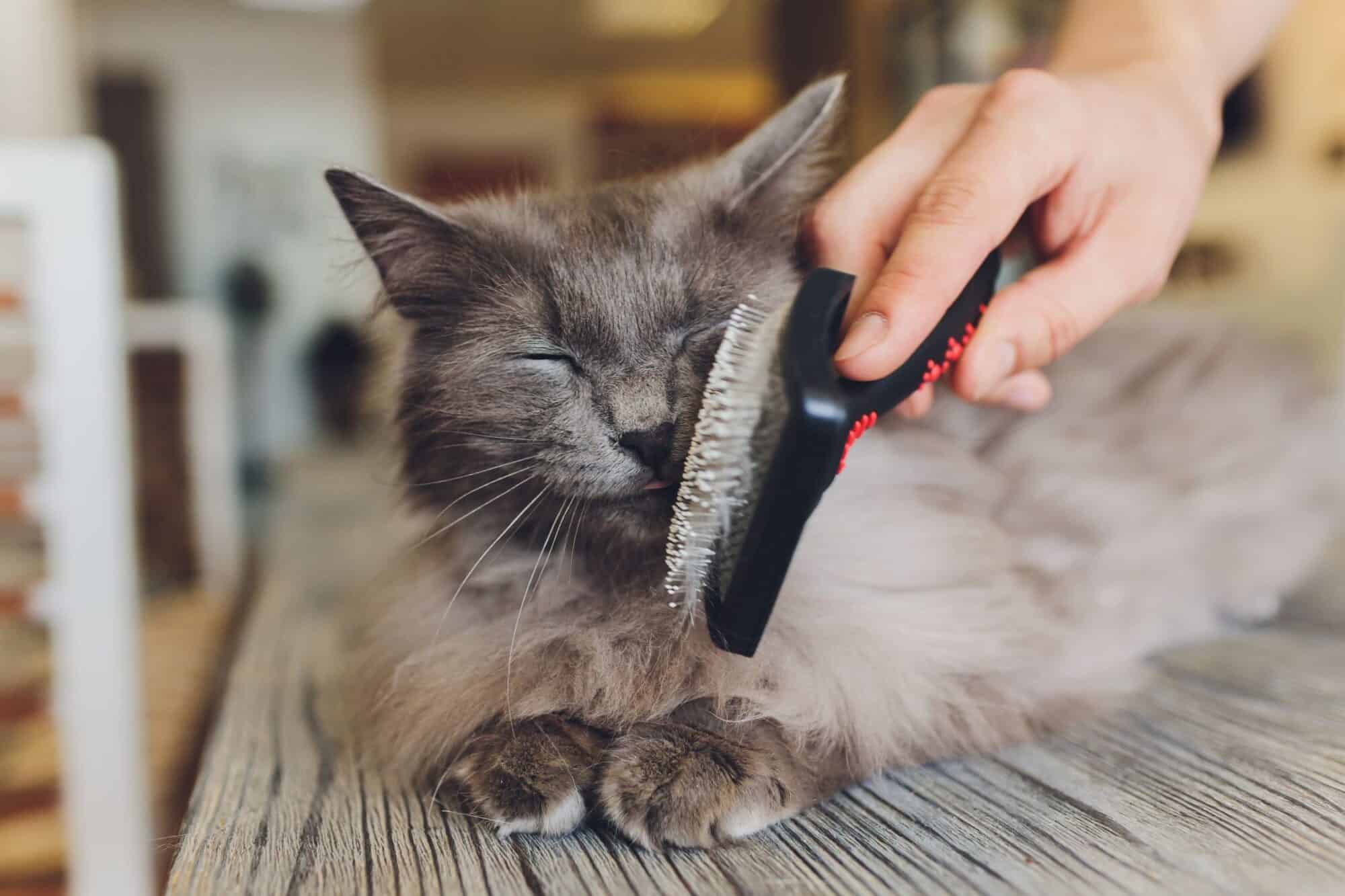Spotlight on Feline Health: Coping With Feline Shedding

Pet hair is somewhat expected for cat owners, and for some may even be a badge of honor. What is normal though? How much should the average cat shed? Is increased hair loss a sign of a problem? A cat’s coat is definitely an insight into overall feline health. Understanding cat shedding can help pet lovers and your team at Caring Paws Animal Hospital take better care of your kitty.
Normal Cat Shedding
Normal hair growth for cats is cyclical. Long or short, cats lose hair all the time.
The hair growth cycle that includes four stages:
- Anagen (new hair growing actively)
- Catagen (when a new hair reaches its maximum length)
- Telogen (hair at rest not actively growing)
- Exogen (hair sheds at the end of its lifecycle)
A new hair will then begin to grow from the follicle after the exogen phase, and the cycle continues.
At any given time, a cat’s coat contains hairs in all four stages. There are times, though, where more of the hairs are in the exogen phase, which results in shedding. Pets who are mostly indoors tend to have less shedding in spurts, and instead shed more consistently throughout the seasons.
Your Cat’s Coat as a Reflection of Health
A healthy cat’s coat will be sleek and shiny, without matting or dull patches. Areas of hair loss or shorter hairs can indicate a problem.
Reasons for a less-than-optimal coat include:
- Nutrition: A cat who is not receiving the appropriate nutrients often has an unthrifty haircoat. A quality commercial diet balanced by a veterinary nutritionist is optimal. Pets who are on homemade diets are at high risk of nutritional deficiency.
- Infectious causes: External parasites such as fleas, skin mites, or lice can lead to hair loss. Fungal or bacterial infection of the skin can also impact the hair growth cycle and thus coat quality.
- Systemic disease: Hormones and overall general health impact on the hair coat. Diagnoses such as kidney disease, hyperthyroidism, osteoarthritis, auto-immune disease, and stress can all lead to hair loss.
- Neoplasia: Cancer can affect the growth of hair as well as overall skin health, and lead to hair loss and increased shedding.
- Allergic disease: Environmental allergens, contact sensitivities, and food allergies can lead to hair loss and abnormal hair growth.
Letting us know if your cat’s coat quality, shedding cycle, or grooming habits have changed can tip us off to trouble and allow us to intervene sooner and more successfully.
Coping With Cat Shedding
Pets tend to shed more in the spring and the fall. If your cat is prone to excessive normal shedding, you can try to offset the inconvenience by:
- Brushing your pet daily with an appropriate brush
- Feeding a high-quality diet
- Using a quality fatty acid supplement
- Staying ahead of skin allergy problems
- Preventing fleas
- Bathing to help exfoliate hair
- Visiting us for wellness visits so that we can detect health problems that contribute to shedding
You might want to utilize washable covers for furniture to aid in quick hair removal.
Sometimes shedding is more than shedding, however. If your cat is itchy, has skin irritation such as redness, bumps or scabs, or has areas of balding, they should be examined.
Being a pet owner can be hairy, but we are happy to help!

